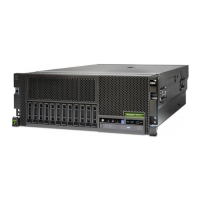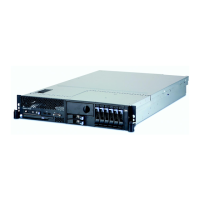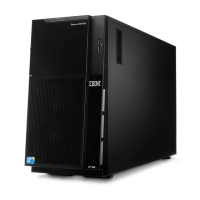MAP 1540: Minimum Configuration
This MAP is used to locate defective FRUs not found by normal diagnostics. For this
procedure, diagnostics are run on a minimally configured system. If a failure is detected
on the minimally configured system, the remaining FRUs are exchanged one at a time
until the failing FRU is identified. If a failure is not detected, FRUs are added back until
the failure occurs. The failure is then isolated to the failing FRU.
Notes:
1. Be sure to unplug the power cable from the system rack and I/O rack before
removing or installing service processor, CPU cards, memory cards, or I/O planar to
avoid damage.
2. This MAP assumes that a CD-ROM drive is installed and connected to a SCSI
adapter in slot 7 of the primary drawer, and a Diagnostics CD-ROM is available.
3. If a general access password or privileged-access password is installed, you are
prompted to enter the password before the diagnostic CD-ROM can load.
4. The term ″POST indicators″ refer to the device mnemonics (words Memory,
Keyboard, Network, SCSI, and Speaker) that appear on the system console during the
power-on self-test (POST).
5. The service processor may have recorded one or more symptoms in its error log. It
is a good idea to examine that error log before proceeding (see service processor
System Information Menu).
6. The service processor may have been set by the user to monitor server operations
and to attempt recoveries. You may wish to disable these actions while you
diagnose and service the system. If you disable them, make notes of their current
settings so that you can restore them easily. The following table lists the settings:
Surveillance From the service processor Setup Menu, go to
the Surveillance Setup Menu and disable
surveillance.
Unattended Start From the service processor System Power
Control Menu disable unattended start mode.
Reboot Policy From the System Power Control Menu go to
the Reboot/Restart Policy Setup Menu and set:
a. Number of reboot attempts to 0 (zero)
b. Use OS-Defined restart policy to No
c. Enable supplemental restart policy to No.
Call Out From the Call-In/Call-Out Setup Menu, go to
the Serial Port Selection Menu and disable
call-out on both serial ports.
Chapter 3. Maintenance Analysis Procedures
117
